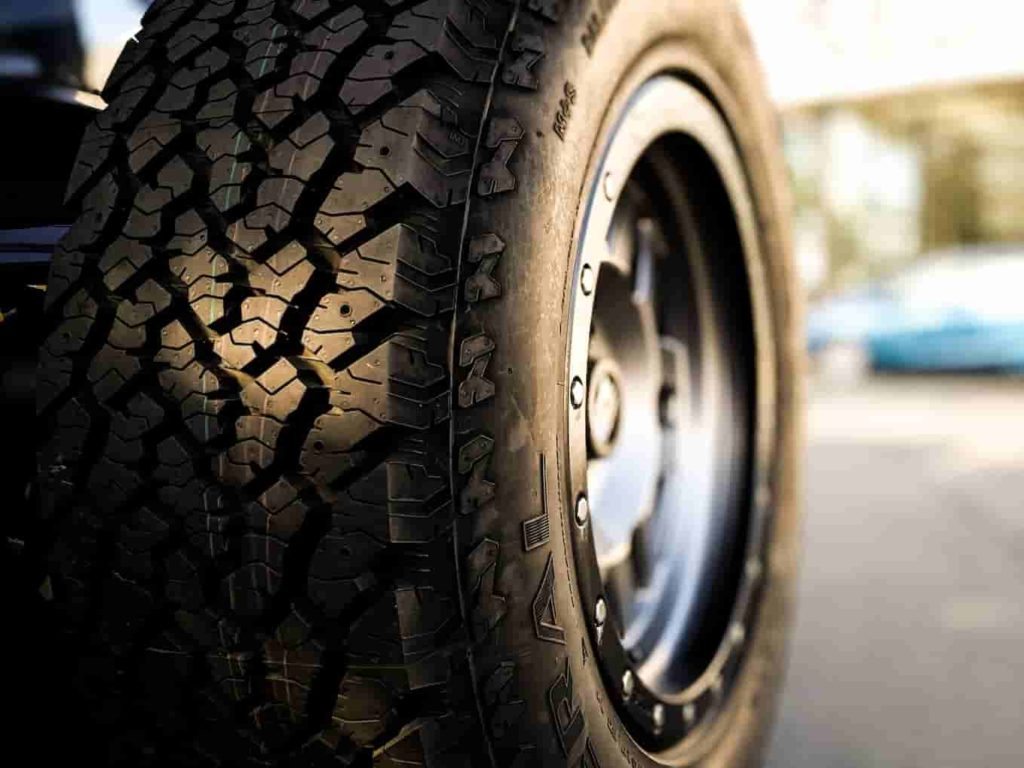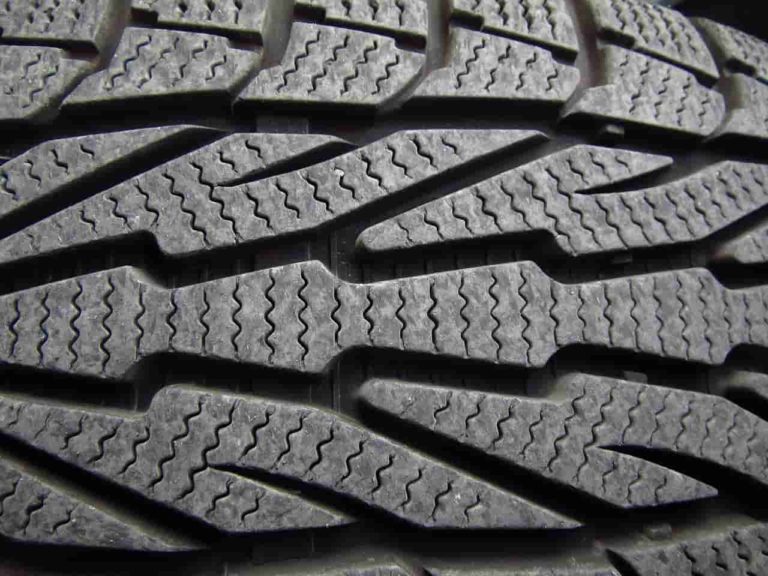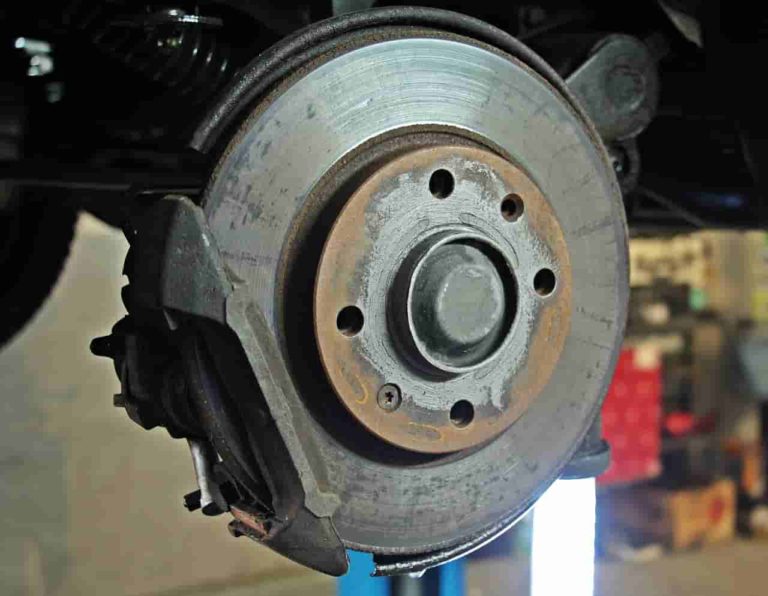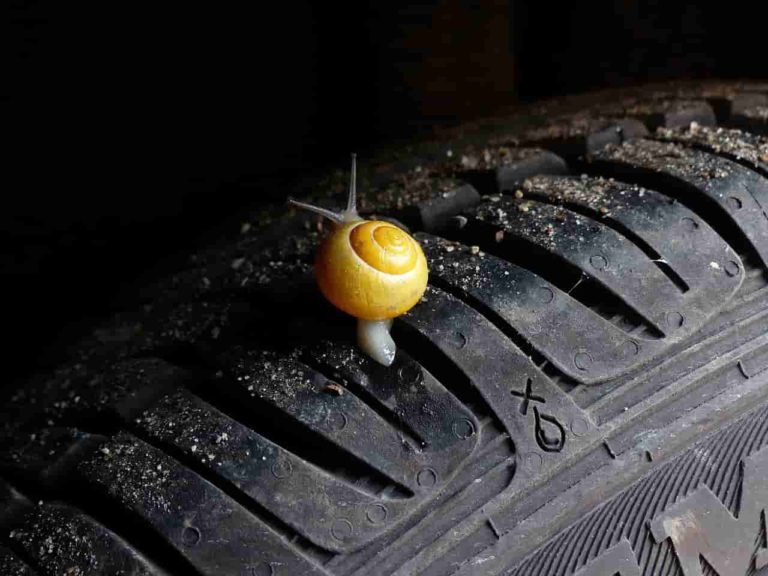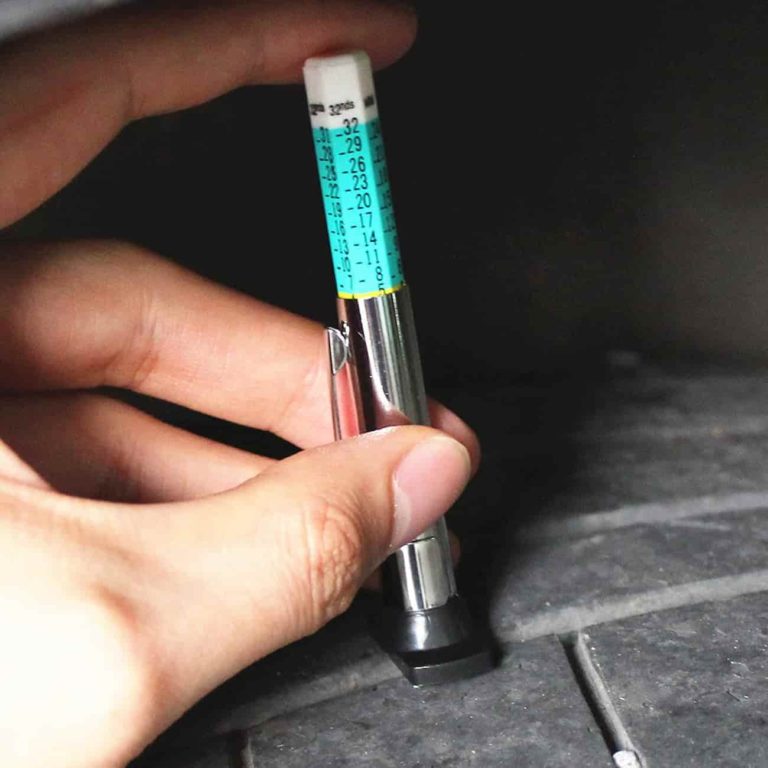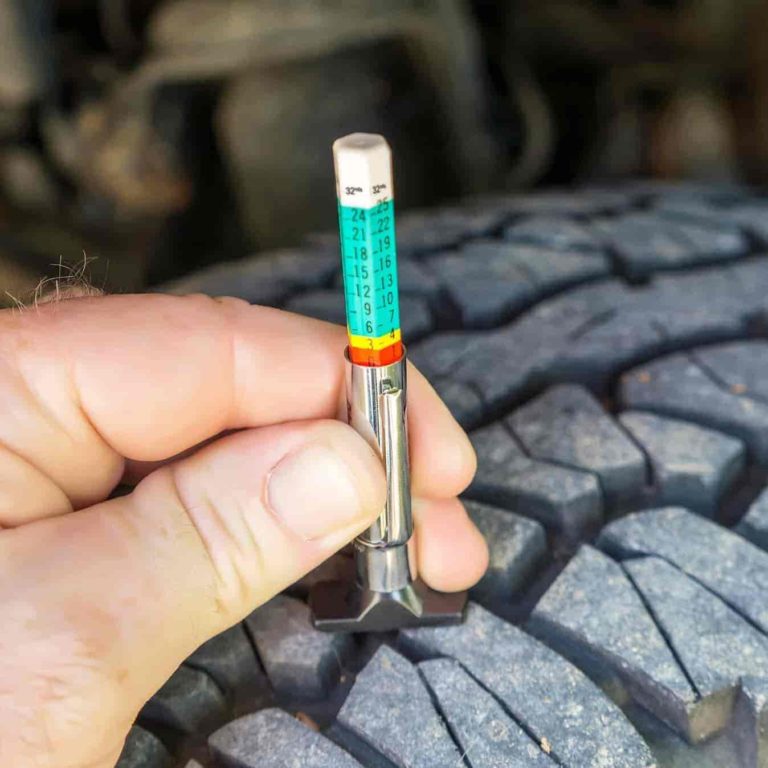Introduction
Driving is an essential part of modern life, and it’s crucial to ensure that your car is safe to operate. One of the most important elements in vehicle safety is tire tread.
Tire tread, which refers to the grooves on a tire’s surface, provides traction that keeps your car in contact with the road. Proper tire maintenance increases driver safety by improving handling, maintaining traction in different weather conditions, reducing braking distance, preventing hydroplaning, and extending tire life.
What is Tire Tread?
Tire tread refers to the pattern or design on a tire’s surface that makes contact with the road. The depth and design of this pattern can vary depending on its intended use. In passenger cars and light trucks, tires usually have a symmetrical or asymmetrical pattern with deep channels and blocks referred to as “tread grooves.” These grooves help channel water away from the tires while driving on wet roads.
Additionally, tires have small slits called “sipes,” which improve traction on snow and ice by biting into it like tiny teeth. Some tires also feature unique patterns for off-road purposes like mud terrains or all-terrain designs suitable for different conditions.
Importance of Tire Tread in Driving Safety
The importance of maintaining adequate tire tread cannot be overstated when it comes to driving safety. Good-quality tires offer improved handling characteristics compared to worn-out ones as they grip better under various weather conditions such as rain or snow. Properly maintained tires help prevent accidents by allowing drivers better control over their vehicles while cornering, braking and accelerating.
A significant benefit of regular maintenance is reduced risk during emergencies where shorter stopping distances can make all the difference between avoiding accidents or getting involved in one. Additionally, well-maintained vehicle tires save money at gas pumps because they roll more efficiently.
Article Overview
The following sections will provide a detailed discussion on why tire tread is important. The first section discusses how tire tread affects traction and stability and what role they play in different weather conditions.
The second section explains how braking distance is an essential factor for stopping safely, followed by the section that highlights the importance of preventing hydroplaning on wet roads. In the fourth section, we discuss how proper maintenance can improve tire longevity, and finally, in the last section, we cover how to measure tire tread depth using a penny or a gauge.
Traction and Stability
How Tire Tread Affects Traction
Traction is the ability of a vehicle’s tires to maintain contact with the ground, which allows for proper acceleration and deceleration. The design and condition of a tire’s tread play a vital role in providing traction.
The grooves and patterns on the tire’s surface help displace water, snow, and other debris that can cause slips or skids on the road. As the tire rotates, it grips onto the surface with its tread pattern to prevent slipping.
The depth of these grooves also affects traction. New tires have deeper grooves that provide better grip than worn-out ones.
When you drive on bald tires or those with shallow treads, you reduce your vehicle’s ability to grip onto the road. This can result in skidding or loss of control during acceleration or braking.
Importance of Traction in Different Weather Conditions (Rain, Snow, Ice)
Different weather conditions require different levels of traction from your vehicle’s tires. Wet roads require better traction to avoid hydroplaning while icy roads need maximum grip to prevent slipping or sliding off the road.
Tires designed for rainy conditions have deeper grooves that allow water to flow through them easily while those designed for snowy conditions have small slits called sipes that create extra biting edges into snow for enhanced traction. Ice requires even more significant tread features such as studs inserted into tread blocks or zig-zag patterns carved into the rubber itself; this will help improve stability on frozen roads.
How Tire Tread Improves Stability While Driving
Stability is critical when driving at high speeds as it prevents your car from swerving due to sudden changes in direction or speed. Adequate tire tread contributes to good stability by minimizing your steering input needed when turning corners while increasing grip during hard braking. Tread blocks on your tire’s surface work together to improve stability by providing a larger contact patch with the road.
This not only improves traction but also provides improved handling and cornering by reducing understeer and oversteer. Having adequate tire tread is essential for safety while driving, especially in demanding weather conditions.
The variation in tread design and depth caters to different types of roads or weather conditions to deliver optimal performance. It is wise to have your tires checked regularly for wear and tear, replace them when they are no longer safe, or if you plan on driving through difficult terrain.
Braking Distance
When driving, one of the most crucial factors in avoiding accidents is the ability to stop quickly. The braking distance is defined as the distance it takes for a vehicle to come to a complete stop after the driver hits the brake pedal. This distance is heavily impacted by tire tread, which plays a critical role in ensuring the safety of both the driver and passengers.
Explanation of How Tire Tread Affects Braking Distance
Tire tread helps a vehicle maintain traction on the road while driving, especially during sudden stops. When brakes are applied, tires must grip onto the road surface to slow down or stop in time. Tread patterns provide channels for water and debris to escape from under tires while driving, creating an essential grip between the tires and road.
Worn-out tires with low tread depths dramatically increase braking distances because they cannot maintain adequate contact with roads. Fatal accidents can occur if drivers cannot brake effectively in panic or emergency situations.
Braking Distance Comparison Between New and Worn Out Tires
Recent studies have shown that cars with new tires can come to a complete stop from 60 mph within 100 feet on dry concrete roads. However, cars with worn-out tires require at least 160 feet for them to come to a complete stop under similar conditions.
This difference may seem insignificant but imagine you’re driving in heavy traffic where you have little room to maneuver. The difference of over 50 feet could mean avoiding an accident or being involved in one.
According to another study conducted by the National Highway Traffic Safety Administration (NHTSA), tire-related crashes account for around 9% of all traffic accidents in the United States. Furthermore, around 25% of all car accidents related to tire failure are caused by worn-out treads.
Importance of Shorter Braking Distance in Avoiding Accidents
Shorter braking distances enable drivers not only to avoid collisions but also react appropriately when unexpected situations occur on the road. It also allows drivers more time when encountering obstacles such as pedestrians or animals crossing roads.
Having good tire treads reduces accident risks significantly because it increases responsiveness and control of the vehicle. Drivers are recommended to replace their tires once the treads reach a depth of 2/32 inches or less to optimize their car’s stopping ability and ensure maximum safety on the road. We recommend replacing your tires at 4/32 inches, just to be safe.
Hydroplaning Prevention
What is Hydroplaning?
Hydroplaning is a phenomenon that occurs when a layer of water builds up between the tire and the road surface, causing the tire to lose contact with the road. This can result in a loss of steering control, as well as an increase in braking distance. Hydroplaning is most common on wet roads where there is a lot of standing water.
The risk of hydroplaning increases at high speeds, so it’s important to be aware of road conditions and adjust your driving accordingly. In addition to speed, other factors that can increase the risk of hydroplaning include worn-out tires, improperly inflated tires, and poor drainage on roads.
How Tire Tread Helps Prevent Hydroplaning
Tire tread is designed to channel water away from the tire and maintain contact with the road surface. The grooves in tire tread act like mini channels that allow water to escape from beneath the tire as it rotates. This helps prevent hydroplaning by creating a barrier between the tire and any standing water on the road.
In addition to maintaining proper tire pressure and ensuring that tires are not worn beyond their life span, it’s important to choose tires with appropriate tread depth for your driving conditions. Tires for wet or snowy conditions typically have deeper treads than those designed for dry pavement.
The Importance of Preventing Hydroplaning on Wet Roads
Preventing hydroplaning is essential for safe driving on wet roads. Losing control of your vehicle due to hydroplaning can result in serious accidents and injuries.
In addition to maintaining proper tire tread depth and inflation levels, there are some additional steps you can take to minimize your risk of hydroplaning:
Slow down: As mentioned earlier, speed increases your risk of hydroplaning. Slowing down can help keep your tires in contact with the road surface.
Avoid sharp turns and sudden movements: These actions can cause your tires to lose traction and increase your risk of hydroplaning.
Drive in the tracks of other vehicles: Following in the tracks of other vehicles can help push water away from your tires, reducing your risk of hydroplaning. Hydroplaning is a serious safety concern for drivers on wet roads.
Maintaining proper tire tread depth and inflation levels is key to preventing hydroplaning, along with driving at appropriate speeds and avoiding sudden movements while driving. By taking these precautions, you can help ensure a safe and enjoyable driving experience even when conditions are less than ideal.
Tire Longevity
It is essential to maintain your vehicle’s tires properly and regularly inspect them to ensure their longevity. Proper maintenance involves keeping your tires inflated at the recommended pressure, balancing and rotating them regularly, and checking for signs of wear.
Neglecting these maintenance practices can lead to tire failure, which can be dangerous while driving. Failing to maintain your tires can also result in reduced fuel efficiency, as worn-out tires require more energy to move the vehicle.
According to the U.S. Department of Energy, underinflated or worn-out tires can decrease fuel efficiency by up to 3%. This may not seem like much but over time it adds up, costing you more money at the pump.
In addition, old or worn-out tires increase the risk of blowouts while driving. A blowout refers to a sudden loss of air pressure in the tire that causes it to burst.
This can cause a loss of control over the vehicle and potentially lead to an accident. Proper maintenance and regular inspections help prevent blowouts by identifying any potential issues early on.
The Importance of Replacing Old or Worn Out Tires
Replacing old or worn-out tires is crucial for maintaining road safety while driving. The right time for replacing your vehicle’s tires depends on several factors such as age, usage, type of tire, and weather conditions in which they are used.
Older tires tend to have weaker sidewalls that are more prone to punctures and other types of damage that could cause a blowout while driving. Additionally, if you live in an area with extreme weather conditions (such as heavy rain or snow), then it’s always better to replace your old worn-out tires with new ones designed for those specific conditions.
The standard recommendation is that drivers replace their car’s tires once every six years regardless of their mileage. Even if they seem to have sufficient tread depth, tire rubber deteriorates over time and can become brittle with age, increasing the risk of blowouts.
Proper tire maintenance and regular inspections are essential for the longevity of your tires and your safety on the road. Replacing old or worn-out tires is crucial for maintaining your vehicle’s stability, traction, braking distance, fuel efficiency, and preventing accidents due to blowouts.
Tire Tread Depth Measurement
Tire tread depth is one of the key aspects of tire safety. It determines how well the tire will grip the road and prevent skidding, especially in wet or icy conditions. Measuring tire tread depth is a simple and easy process that can be done with either a penny or a tread depth gauge.
How to Measure Tire Tread Depth Using a Penny
The penny method is an easy way to check your tires’ tread depth without any equipment. Simply insert the penny into a groove on the tire with Lincoln’s head upside down and facing you. If you can see all of Lincoln’s head, then your tire has worn past the recommended minimum depth and should be replaced immediately.
This method may not be as accurate as using a gauge, but it provides a quick assessment of whether your tires need replacing. Be sure to check multiple grooves on each tire to ensure even wear.
How to Measure Tire Tread Depth Using a Gauge
A more precise way to measure tire tread depth is by using a gauge specifically designed for this task. A digital or manual gauge can be used to find out how much tread is left on your tires.
To use this tool, insert the probe into several grooves around each tire and take note of the readings provided by the gauge. The recommended minimum safe level for most passenger car tires is 2/32 of an inch (1.6 mm) according to industry standards.
The Recommended Minimum Tread Depth
The recommended minimum safe level for most passenger car tires according to industry standards is 2/32 inches (1.6 mm). However, we recommend replacing tires when they reach 4/32 inches (3.2 mm) because performance begins declining at this point.
Driving with worn-out tires increases braking distance, reduces maneuverability, and increases the risk of hydroplaning, which can lead to accidents. Therefore, it is essential to check your tires’ tread depth regularly and replace them as soon as they reach or fall below the recommended minimum depth.
Checking Your Tires Regularly
Checking your vehicle’s tire tread depth regularly is a crucial part of maintaining your car. Worn-out tires pose a significant safety risk since they are more prone to blowouts and less effective in preventing skidding. Regular inspection of your tires can also help you detect other issues that may arise over time, such as punctures or uneven wear.
Proper maintenance can prolong the lifespan of your tires and save you money in the long run. Tire tread depth measurement only takes a minute and is an essential aspect of tire safety that should not be ignored.
Using either a penny or a gauge to measure tire tread depth is a simple process that can be done regularly to prevent accidents caused by worn-out or damaged tires. Regular inspection and replacement of old or worn-out tires will ensure safe driving experiences for all road users.
Conclusion
The importance of tire tread cannot be overstated when it comes to driving safety. It affects traction and stability, braking distance, hydroplaning prevention, and even tire longevity. Maintaining proper tire tread depth and replacing worn-out tires is necessary for safe driving.
Checking your tire pressure regularly, rotating your tires, and performing proper maintenance will also extend the lifespan of your tires. Remember, replace your tires at 4/32nds!
The safety of you and your passengers depends on it. So always remember to check your tire pressure regularly, rotate your tires every 5-7k miles or according to your manufacturer recommendations, balance them when needed, and perform routine maintenance like alignment checks. All these tasks will ensure that you’ll get optimal performance from your vehicle’s tires for years to come!
